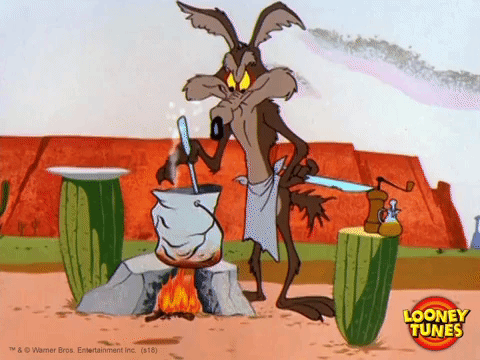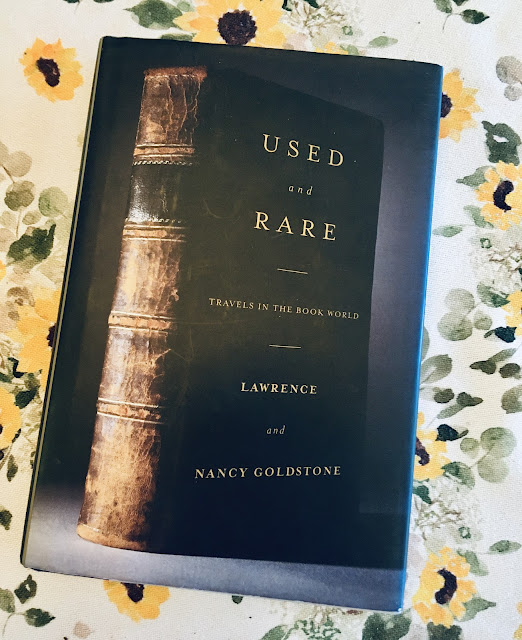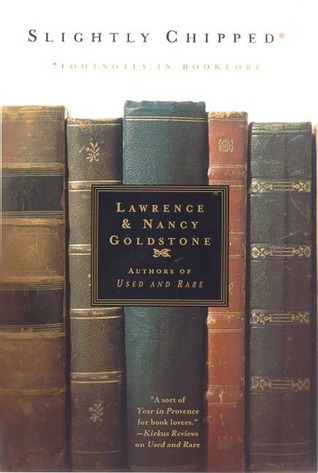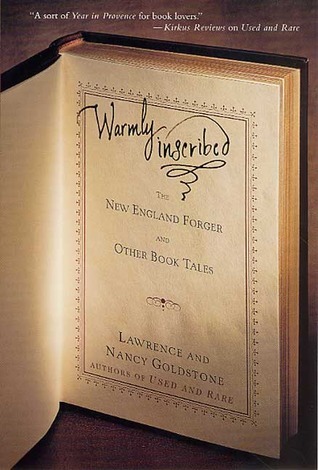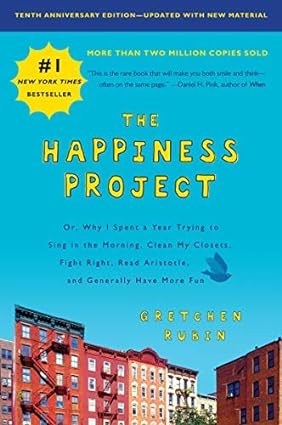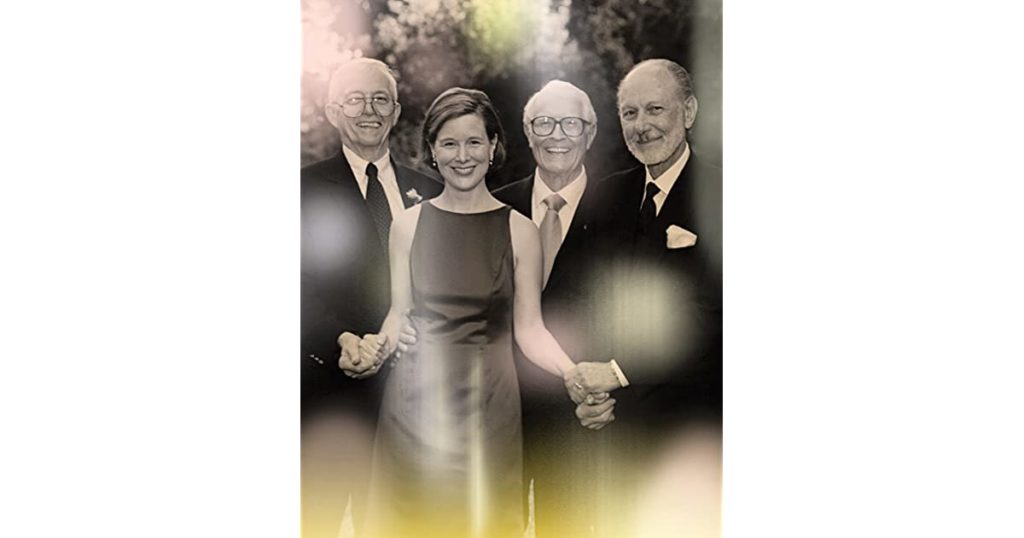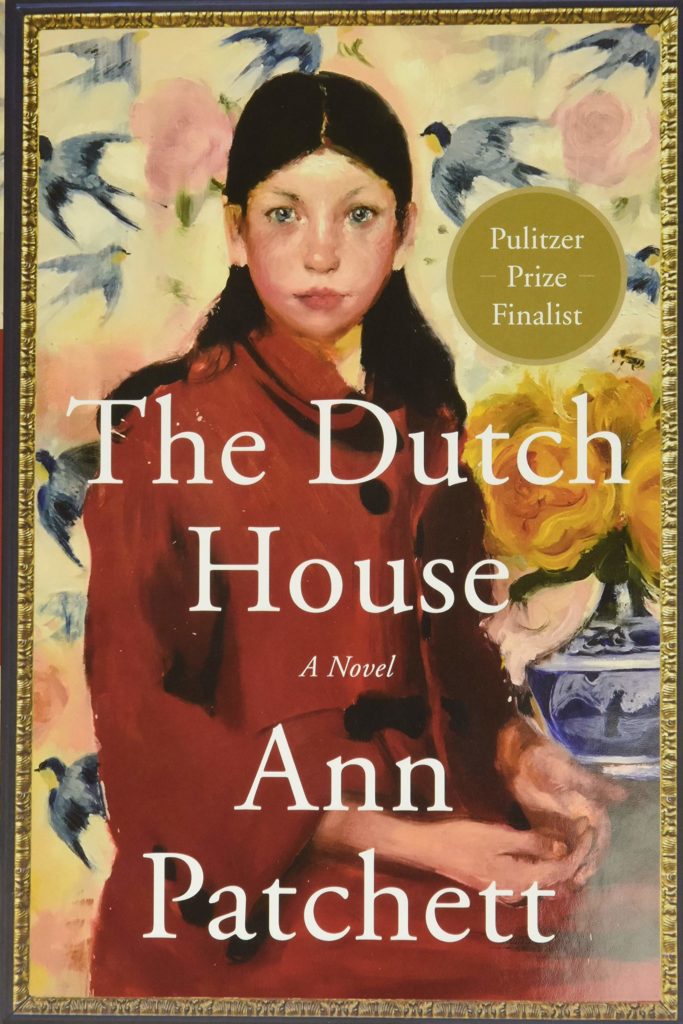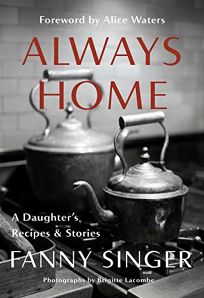Rare Book Collecting
Fair warning here’s yet another post about books-about-books, if you’re not into that sort of thing, (despite the Book Barmy name of this blog) please feel free to skip this.
I am a book hoarder accumulator, not a book collector in the literal and rare sense. But I have, over the years, very much enjoyed reading about book collectors, their collections, and especially how they find their books. Two of my favorites authors in this genre are the the husband and wife team of Lawrence and Nancy Goldstone. I own all three of their books about books and recently revisited them while dusting.
(Side note: Dusting my books takes several days as I get down the books and have to remind myself – Did I read this? Will I read this? Yes, I read this and will keep it. Often I find myself reading away the time I should be dusting and sorting — such was the case with these three books.)
Their first book is titled Used and Rare – Travels in the Book World
A book for anyone who loves books, the Goldstones didn’t know anything about rare books when they started visiting antiquarian book shops — all they wanted were nice hardback copies of the authors they loved. It all started when Ms. Goldstone tracked down a ten-dollar copy of War and Peace as a birthday gift for her husband, this set the couple onto an unexpected, delightful and expensive journey of book collecting.
Used and Rare was written in 1997, before Amazon or Goodreads took off, so most of the book shopping is done the old fashioned way — the Yellow Pages and a full tank of gas. Over the next three years they haunted used and rare bookshops between New York and Boston — from dark, dust-filled barns to elegant Park Avenue galleries. Starting with cheap, out-of-print used books, their addiction soon graduated to first editions and, finally, to three-quarter morocco, custom-bound antiquarian classics that they could not afford. Along the way, they gained an education in books—and in people—that we can all savor. This warm and witty story is filled with eccentric characters, from a punk book dealer peddling fifty-thousand-dollar modern firsts to a golf-obsessed Shakespearean scholar with books on demonic possession in his basement. Part travel story, part love story, and part memoir. If you’re looking for a very gentle introduction to the art and business of used, rare, and fine book dealership, Goldstone’s humorous book is an absorbing place to start, a delightful journey, and a love letter to book lovers everywhere.
The squeal is titled Slightly Chipped – Footnotes in Booklore
This follow up is different – a collection of essays which detail the couple’s further explorations into the curious world of book collecting.
They get hooked on the correspondence of the Bloomsbury group (especially their romantic liaisons), they track down Bram Stoker’s early notes for Dracula, and puzzle over the incredible markup of hypermoderns. (Recently published books that prove very collectable. A first edition of Sue Grafton’s “A Is for Alibi” sold for $1,250 in 1998. Yes I checked my shelves, just in case…but no.)
The Goldstones chronicle their visits to bibliophile’s dream places such as the Rosenbach Museum in Philadelphia and the Pequot Library in Connecticut. They are fascinated by the reading habits of the Duke and Duchess of Windsor, and attend the auction of the contents of their library at Sothebys. This auction ultimately brought approximately $24 million and included a number of collectible books.
Slightly Chipped was published in 1999 at the dawn of the Internet era, and therefore touches only lightly on impact to booksellers.
Again, unlike their first book, Slightly Chipped is written as separate essays and I missed learning more about their story and their book collecting. I had to laugh when Nancy says to her husband:
“Do they really think people are going to use a computer to buy books they’ve never seen from a dealer they’ve never heard of and give him a credit-card number to boot?”
Again Slightly Chipped is different from the first book, and while I enjoyed the various essays I did miss the couple’s story of their own book adventures and collecting. Don’t get me wrong, this book is another delight for both the general reader and book collectors alike.
Warmly Inscribed is the third and last of Lawrence & Nancy Goldstone’s books about rare book collecting.
This book finds them once again visiting book fairs and many antique book sellers. Written in 2001, the authors once again write about the internet and how it was starting to change the way people buy and sell books and the devastating effect on brick and mortar bookstores.
There is a chapter devoted to the New England Forger, Kenneth Anderson, with the details of his forgery of signatures on books and the difficulty in getting law enforcement to prosecute him.
The Goldstones treat us to a great tour of the Library of Congress Rare Book Section led by one of the library’s rare book specialists — an insider’s look most people will never experience. (Okay on my bucket list…)
As always, the writing is easy, personable and inviting. The stories are engaging, the gossip is juicy. I found it a great book to read a few chapters at a time while cuddled up in bed on a cold night.
The Happiness Project by Gretchen Rubin
I am focusing on happy things right now – walks with Husband, long talks with good friends, fresh peach ice cream, a pedicure, Netflix comedy specials, and finishing a page turner/thriller I started on the plane (more on that later).
The other day, I heard about new book from and co-written by Oprah (yes she’s baaaack) and it’s getting lots of press. More about that book HERE.
I may order this book from the library eventually, but in the meantime I remembered I had this one my shelves and dug it out the other day.
The Happiness Project: Or Why I spent a Year Trying to Sing in the Morning, Clean my Closets, Fight Right, Read Aristotle and Generally Have Way More Fun
I know I at least browsed through this book years ago, after picking it up at the library book sale, but I really didn’t remember it. I’m not a big fan of self-help books, but I decided to give it try again ~~
Gretchen Rubin had an epiphany one rainy afternoon in the unlikeliest of places: a city bus. “The days are long, but the years are short,” she realized. “Time is passing, and I’m not focusing enough on the things that really matter.” In that moment, she decided to dedicate a year to her happiness project. She decided to spend a year devoting each month to a “theme” designed to make herself happier and then write about it.
The introduction explains that while she was content – she wasn’t really happy, and because she’s a mom and wife she couldn’t escape to an island and stroll beaches — so she had to do her ‘happiness project’ from home.
I enjoyed the introduction and found some laughs as I picked through chapters, and I even related to some of her insights.
It was time to expect more of myself. Yet as I thought about happiness, I kept running up against paradoxes. I wanted to change myself but accept myself. I wanted to take myself less seriously — and also more seriously. I wanted to use my time well, but I also wanted to wander, to play, to read at whim. I wanted to think about myself so I could forget myself. I was always on the edge of agitation; I wanted to let go of envy and anxiety about the future, yet keep my energy and ambition.
She cleaned closets and de-cluttered, while another month she focuses on friendships encouraging us to make time for friends and to be there. Even all those events you don’t like? Tupperware sales party- just do it! In the same vein, Ms. Rubin goes on to suggest that we should reach out and make three new friends. That’s a tough one for me, I can’t keep up with the beloved friends I have now. Plus, as I get older (and with lingering post COVID social anxiety), the ‘make new friends thing’ takes much more effort.
Another chapter is about treating her husband better as she is a nag, and while I am not a nag, I sometimes don’t appreciate or cherish my Husband as I should every day and the following quote really hit home….I need to be better at this.
He is my fate. He’s my soul mate. He pervades my whole existence. So, of course, I often ignore him.
October’s chapter was pay attention – be in the moment.
November: Keep a contented heart. Here she mentions laughing, using good manners and giving positive reviews. (Whoops I’m not taking her advice on that last one right now.)
I tried Book Barmy friends, I really tried, to make this book work for me and help me – but found I was growing bored and somewhat weary of her simplistic view of happiness.
Is happy being in a constant state of bliss or exuberance? Or is it finding contentment? Or is happiness simply not wanting to kill someone today?
I think – no I know happiness is different and unique for everyone. One friend swims in the frigid waters of the bay, another loves sewing, and yet another volunteers as a school aid.
So I’ll go back to my own list of things that make me happy – they are tried and true; I have a 700-page best seller on my Kindle (great happiness), there’s a new Netflix series to try (hopeful happiness) I haven’t made Husband’s favorite dinner in a long time (favorite thing to do), there’s a new city park to explore (oh yay) and as they say, if you have a garden and library you have everything you need.
When I think of happiness, I am always reminded of the last scene of Love Actually – where Hugh Grant narrates that the best place to see love (and I’ll add happiness) in action is at the arrivals gate at Heathrow (or any airport for that matter).
Two Books by Ann Patchett
As you know, Ann Patchett is one of my favorite authors, as evidenced HERE and HERE. So of course, I read her most recent essay collection, These Precious Days. I’ve grown to enjoy reading essays, especially when written by an author I admire.

From the very first essay, I was highlighting passages — how Ann feels most vulnerable when carrying her fictional characters around in her head as she is writing her novels.
And, her essays written during the pandemic had me nodding in agreement.
Most of the writers and artists I know were made for sheltering in place. The world asks us to engage, and for the most part we can, but given the choice, we’d rather stay home.
Another essay that will stay with me for a long time was written about her three fathers — her biological father and her two stepfathers. She expounds on their three very different personalities and relationships with her. The way she describes the group photo she orchestrated with the three of them made me smile, and her antidotes about each of them left me sad, but nonetheless, feeling good.
Ms. Patchett writes about writing, her books, and how she’s obsessed with making sure her book covers are exactly the way she envisions them. (More on that in the review below.)
But most poignantly, she writes about two important friendships — with lifelong friend Talia, and her new friend Sooki. Her friendship with Sooki — the topic of the title essay — was especially moving. Ms. Patchett tells of reading an advance copy of Tom Hanks’ book Uncommon Type, and how she loved it and wrote a review for the publication. Then she was invited to interview Tom Hanks, himself. That’s where she met Sooki Tom’s assistant— and the two became close email friends. And then, Sooki was diagnosed with pancreatic cancer.
Ann sprung into action because she could. Her husband, Karl, a doctor, connected Sooki with a clinical trial, and she moved in with Ann and Karl during her treatments. Near strangers, but not strangers at all. It’s always remarkable to me how two souls find one another and connect.
For as many times as the horrible thing happens, a thousand times in every day the horrible thing passes us by.
And then this quote I read and re-read shaking my head at Ms. Patchett’s insight…
The trouble with good fortune is that we tend to equate it with personal goodness, so that if things are going well for us and less well for others, it’s assumed they must have done something to have brought that misfortune on themselves while we must have worked harder to avoid it. We speak of ourselves as being blessed, but what can that mean except that others are not blessed […] It is our responsibility to care for one another, to create fairness in the face of unfairness and find equality where none may have existed in the past.
If there is a theme to These Precious Days — it’s all about hope and finding a way through the darkest times — and doing so with ferocity, understanding, openness, and love.
Reading this book made me feel like the world is not actually such a horrible place, because there are dear friends and good people everywhere – they just don’t make the headlines.
The next Ann Patchett I read was The Dutch House. The very kind publishers sent me a digital advance readers copy several months (whoops) several years ago, but I had forgotten about this book. That is, until I read about the author’s long journey to find and eventually create this cover art (in one of her essays reviewed above).
But first I’ll tell you about the plot.
The Dutch House is located just outside of Pennsylvania and is a grand home with lovely large windows, a stately facade, and, beautiful interiors. Maeve and Danny Conroy live there with their father. We learn that the father very much wanted this house and quickly purchased it when the previous (Dutch) owners died. Their mother is no longer around (we learn why later on) and now they have the proverbial stepmother, who has her own two daughters. When their father dies, the house becomes part of a painful tug of war… Maeve and Danny are stripped of all their inheritance and thrown out their Dutch House. At this point, the family secrets start tumbling out.
This sudden life change means the brother and sister need each other even more. The book follows them through five decades. As they became adults, I grew more attached to them; and was invested in the choices they made and cringed (more than once) at their behavior.
This novel is as much a story of the house itself as it is of the people who inhabit it. The story line encompasses several generations of the Conroy family as they deal with issues that many of us face during our lifetimes – difficulty communicating within the family, sickness and health, economic concerns, step parenting, sibling relationships, and what it means to feel at home where you are and within yourself. And the sumptuous Dutch House is a fully developed character in its own right.
The dining room ceiling was painted a shade of blue both deep and intense, and was covered in intricate configurations of carved leaves that had been painted gold, or, more accurately, the leaves had been gilded. The gilt leaves were arranged in flourishes which were surrounded by circles of gilt leaves within squares of gilt leaves. The ceiling was more in keeping with Versailles than Eastern Pennsylvania, and when I was a child I found it mortifying. Maeve and my father and I made a point of keeping our eyes on our plates during dinner.
Ultimately, this is a story about how a brother and sister’s love for each other transcends circumstances that would cause others to break.
We had made a fetish out of our misfortune, fallen in love with it. I was sickened to realize we’d kept it going for so long.
The Dutch House is slow burn and the reader is never totally sure where the story is going. There is no dramatic or climatic ending. The writing is gorgeous, and I enjoyed the sense of place and the brother and sister’s characters were fully realized. But, truth be told, I thought this was not one of Ms. Patchett’s best works – there was too much wallowing — too much dysfunction.
N.B. The cover for The Dutch House was described in one the author’s essays in My Precious Days. The novel describes a portrait of Maeve which hangs in the Dutch House. For months, Ms. Patchett and her publishers searched find the right art work — without success. So Ms. Patchett sent the manuscript to an artist friend which resulted in this cover painting. All agreed instantly it was perfect and now the actual artwork now hangs in the author’s home.
Harper Perennial kindly provided a digital review copy via Edelweiss.
Always Home by Fanny Singer
A fellow foodie friend loaned me his signed copy of this book — calling it the perfect escapist read during the pandemic. Given the title, I had to laugh and agree.
I just finished Always Home, having dipped in and out of it for many months now.
But first a little background; Fanny Singer is the daughter of Alice Waters, one of our most beloved chefs and founder of the famous Chez Panisse restaurant.
Alice was an early advocate of sourcing only the best local ingredients and is also known for her edible schoolyard program in Berkeley. And, although I am now weary of Alice and her endless publicity, I was fascinated to read this lovely memoir by her daughter, Fanny, who grew up in the glow of this revered chef.
Husband and I have been fortunate to have dined at Chez Panisse (and the more casual upstairs Fanny Cafe) and Always Home brings Fanny, her family, and behind the scenes of the restaurant to life. Turns out, Fanny was partially raised in the restaurant kitchens, surrounded by attentive chefs and prep cooks. Hers was a life full of love and really, really yummy food. Even Fanny’s lunchboxes were meticulously curated by her culinary-obsessed mother:
My lunches were not broken into courses as much as they were divided into multiple parts. There was a largish container that held a salad, a medium container for garlic bread (levain toast rubbed with olive oil and garlic), another for a season fruit compote or macédoine, a very small jar with a vinaigrette because, of course, we were both aware of the perils of prematurely dressing the salad.
Of course, I was intrigued by the recipes throughout the book and made notes to copy such delights as authentic French Citron pressé, various simple salad dressings, real Aioli, and Franny’s roast chicken which requires such high oven heat, that it comes with a warning to disable your smoke detectors.
I found Alice Waters’s quirks weirdly fascinating–her tendency to drink from bowls rather than mugs and to “jettison her silverware and delve in with her fingers,” expressing “a primal impulse to be closer to the thing she was eating, to be more sensuously acquainted.” Alice is dogmatic about sourcing only organic, locally-sourced ingredients and it’s revealed as what it actually is – an life-long obsession — which is termed “Chez shopping”.
But mostly I was drawn into the beauty of this life — how even the simplest meal could be made special, the focus on the fresh ingredients, and even the endless curation of flower arrangements everywhere:
Flowers were for my mom not just a confection to be enjoyed at the restaurant, but a part of what made any room complete. Billowing leafy branches and a few stems of some decidedly un-showy flower seem to be permanently installed in a large green urn in the far corner of the kitchen.
Fanny’s childhood trips to France are some of the best parts of Always Home — how their French friends sought beat up Brocantes (antiques) to restore, the overgrown but abundant garden, and evening meals outside under heavily scented rose bushes.
At the same time, this was (and is) a privileged life of wealth — surrounded by renowned cooks, celebrated artists, the access to abundant food resources, and the Berkeley bohemian culture. There is no shortage of name dropping, and a wee bit of trying-too-hard-overwriting. But, in the end, Fanny’s love and admiration for her mother emanates from every page:
There is a quality of ‘homecoming’ that transcend location, and not just because I reach deep into my repertoire of my mother’s recipes to animate her table through mine, but also she is somehow present even when she is not.
Always Home is charming, funny, full of love and really, really (did I say really?) good food. And, hey, any book that helps make a home special for those we love, and perhaps even ourselves, is beyond value these days.
But let’s turn to one of my favorite foodie writers Ruth Reichl — here is her review of Always Home
You will probably pick up this book because you’re curious about how it feels to grow up with Alice Waters as your mother. But you will inevitably be captivated by Fanny Singer’s sensuous voice and sensible soul. The writing’s lovely, but more than that, Fanny has struck a kind of brutal honesty that is extremely rare and completely beautiful. Her writing makes you want to taste every flavor she describes, and soon you’ll be dashing into the kitchen to make watercress soup, wild fennel cakes, and breakfast pudding. But the really important thing is that I’m pretty sure everyone who reads it will come away with the same feeling that I have: Why don’t I live my life like this? How can I do better? I love this book.”
A side note, this is quite an expensive book, however it feels nicely substantial in one’s hands, it’s printed on heavy paper, and contains many beautifully produced photographs. And the best — it’s bound so it will stay open for the recipes. Such a pleasure to have a book printed with that sort of craft and thought.
Kitchen Yarns by Ann Hood
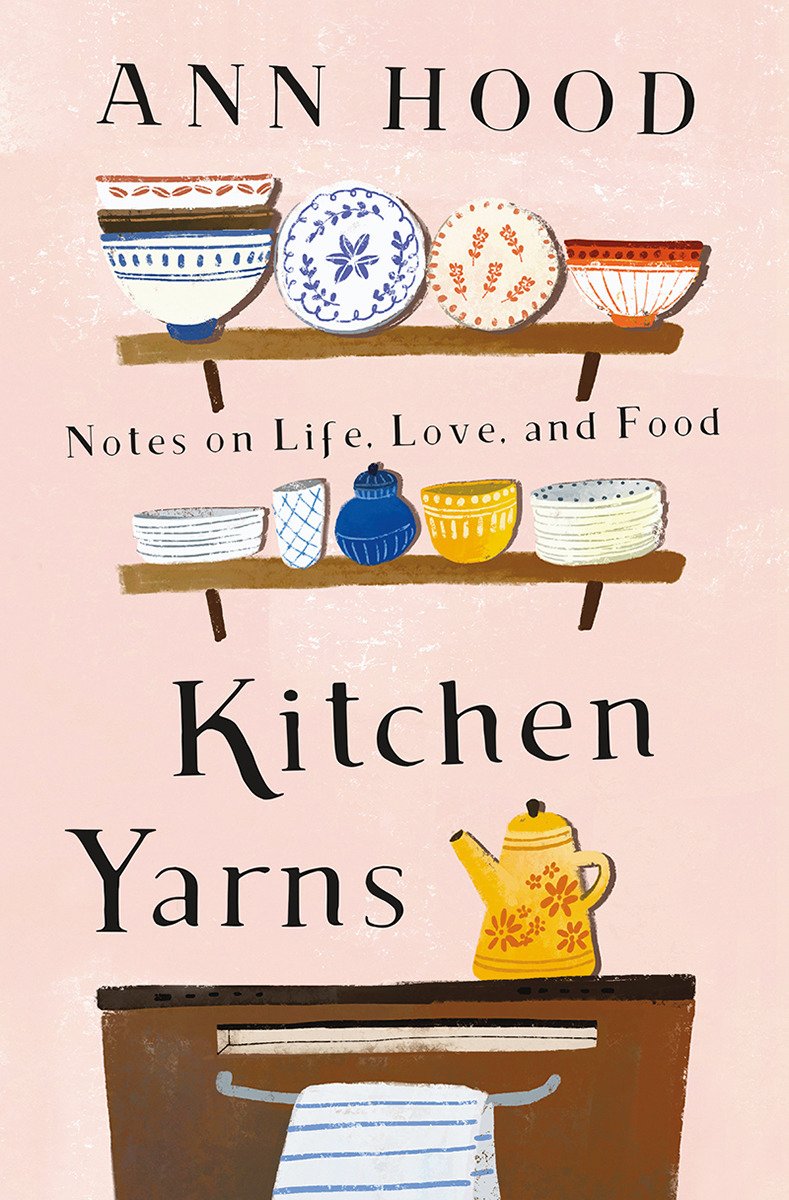 If you’ve not read Ann Hood, you’re missing out on an author with insight and humor. Kitchen Yarns – Notes on Life, Love, and Food is a great place to start.
If you’ve not read Ann Hood, you’re missing out on an author with insight and humor. Kitchen Yarns – Notes on Life, Love, and Food is a great place to start.
I knew I was in simpatico when Ms. Hood makes references to her friend Laurie Colwin one of my favorite foodie writers and novelist — as well as, the Silver Palate Cookbook — still one of my favorites – from the 80’s.
Did I mention that these essays are often fun? In Carbonara Quest, she experiments with variations of this seemingly simple, but deviously difficult dish in an effort to fill her lonely nights as a flight attendant.
When she writes about her daughter who died suddenly at age 5, it wasn’t maudlin, but so truthful and full of love that I had to make the recipe for Grace’s Cheesy Potatoes that very night.
There is one tiny drawback. Many of these essays had appeared in other publications, such as Gourmet magazine, and this makes for an sometimes stilted structure/flow. Mentions of family members, recipes, and parts of Ms. Hood’s past were introduced and re-introduced throughout. We read about her several times and the description of Ann’s brothers passing is repeated almost verbatim in a later essay.
Again a small criticism, as I found this a warm and easy book to sink into. Kitchen Yarns is filled with beautiful language and comforting descriptions of food.
Yes, I do plan to try some of her recipes in my kitchen: including, but not limited to – Peach Pie, Green Herb Sauce, the above mentioned Cheesy Potatoes and Laurie Colwin’s Tomato pie.
An advanced readers copy was kindly provided by W. W. Norton & Co.
If you’re not a foodie, you could also try Ms. Hood’s lovely memoir on reading and books Morningstar: Growing Up with Books.
I also recommend her amazing first novel Somewhere Off the Coast of Maine
The Language of Food by Dan Jurafsky
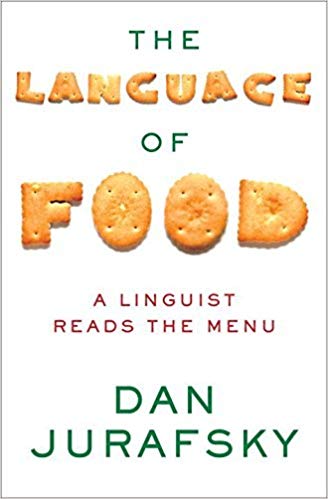 The Language of Food A Linguist Reads the Menu
The Language of Food A Linguist Reads the Menu
by Dan Jurafsky
Fellow foodie friends loaned me this book. We share a love of cookbooks, cooking and seeking out new foods — but they touted it as a completely different type of food book ~~ The Language of Food is just that – like nothing you’ve ever read.
Written by a professor of linguistics and computer science at Stanford University, Mr. Jurafsky (and his team) devoted many (many) hours exploring the origin of food terminology — from food names to the nuances of menu writing — and happily melded it all with computerized linguistic tools to evolve the genesis of this book.
Whoa, I first thought — way above my mental pay grade, but I was instantly fascinated by the introduction, in which the author explains his fascination with food linguists and how it involves the science, history, and culture of many regions. He explains the origin of ‘ketchup’ which derives from a pungent Chinese fermented fish sauce pronounced ke-tchup in Cantonese. This sauce was brought back to Europe by English and Dutch explorers and evolved over 400 years to suit Western tastes and become today’s ubiquitous tomato based condiment. Macaroni descends from a Persian almond pastry which intermingled with the pastas of the Arabs to become pasta. And toasts at weddings historically involved toasted bread.
The first chapter of The Language of Food is devoted to menus and their language. You will both chuckle and be struck at restaurant menu manipulation Back in the 1970’s the use of French denoted expensive and swanky meals – such as ‘Fried Chicken a la Maryland’ or ‘Ravioli en casserole’. Today fancy restaurants do the same thing with often ridiculous descriptions of the origins of the food — grass fed, pasture raised, green market cucumbers (this is especially rampant here on the West Coast and was lampooned in a very funny episode on Portlandia — watch clip HERE.)
But I digress…
Restaurant price points are so ingrained in their menu language that we’re not even aware of it (at least it never occurred to me before). Expensive restaurants use ‘chefs daily selection’ or set prix-fixe menus. In contrast, cheaper places give the diner a lot of choice – not only do they have far more dishes, they also prepare meals to your liking ‘prepared your way’. In fact Mr. Jurafsky points out that the words ‘you’ and ‘your’ appear much more often in cheaper restaurants. And what about middle-priced places? — well they tend to use lots of adjectives such as this mouth watering description of an apple pie:
Rustic Apple Galettte: Hand crafted tart in five inches of butter flaky french puff pastry. We layer fresh ripe apples and bake to a golden brown.
I’ll leave this menu chapter now, but not before I point you to something mentioned which I almost missed – the NY Public Library Menu Collection. I had great fun wasting time one rainy evening. Just take a look and click on some of these wonderful old menus that have been digitally preserved – such as from ocean liners back in the early 1900’s or you can enter a favorite restaurant from your memory and there it is. Such fun.
Okay back to the book.
Sex, Drugs, and Sushi Rolls is an eye-opening chapter on the power of language in restaurant reviews – and how reviewers often use words connected to sex or drugs to hype — such as ‘the chicken wings are addicting’ or ‘the ice cream pastry was just orgasmic’. Perhaps most interesting was the scientist’s investigation into often rigged on-line reviews (such as Yelp) which can sadly bring down a perfectly good restaurant.
In other chapters, you’ll get to read about junk food marketing and how advertising copy got us to crave potato chips and kettle corn at festivals. You’ll learn why the Chinese don’t have dessert and how today’s group cooking/dinner parties evolved from cooking clubs in a mouth watering region in Basque.
I think it comes with the territory, that a food linguist/computer scientist can and will get pedantic. So I must admit I didn’t entirely get through each and every chapter, but I did read quite a bit more of this book than I originally thought I would – (see Mental Pay Grade above…)
The Language of Food is sometimes geeky but more often actually quite fascinating, and I applaud Mr. Jurafsky for devoting so much effort to bring us such delightful insight into the language, history, culture and origins of our food and eating experiences.
I’m off to make our dinner and it’s definitely going to be chefs choice…. 